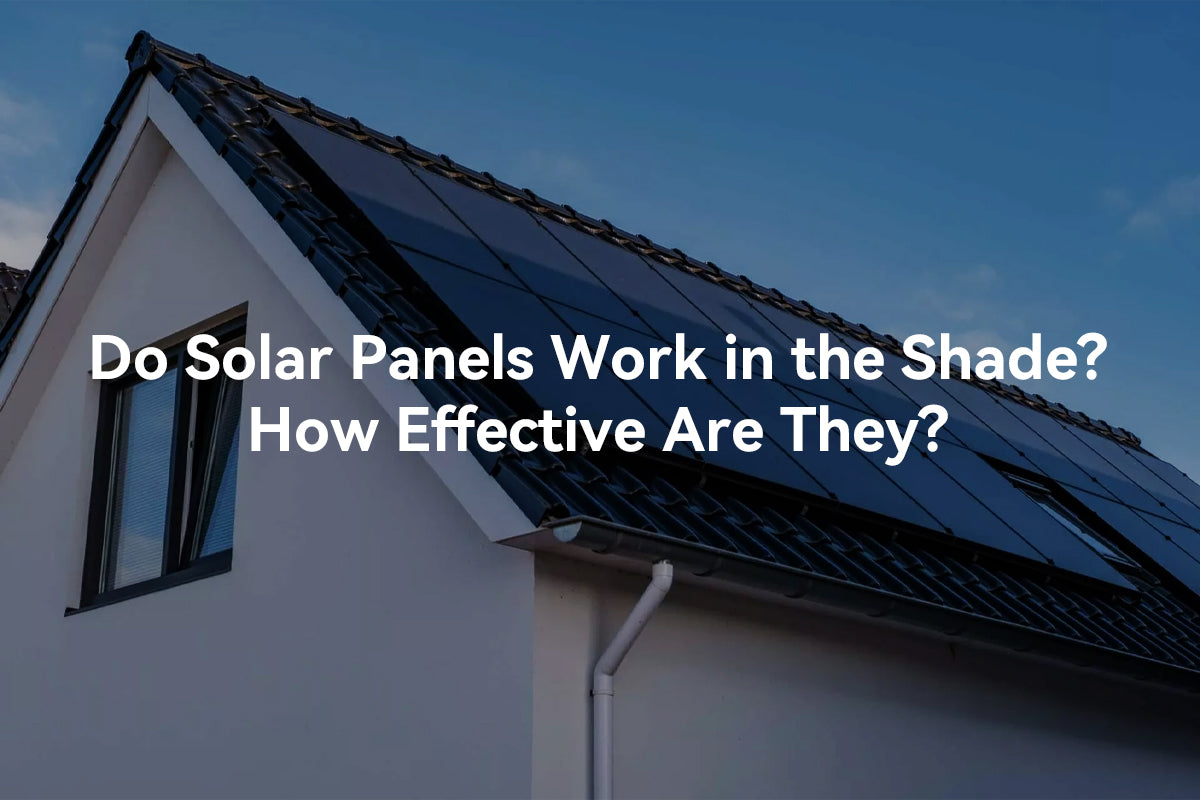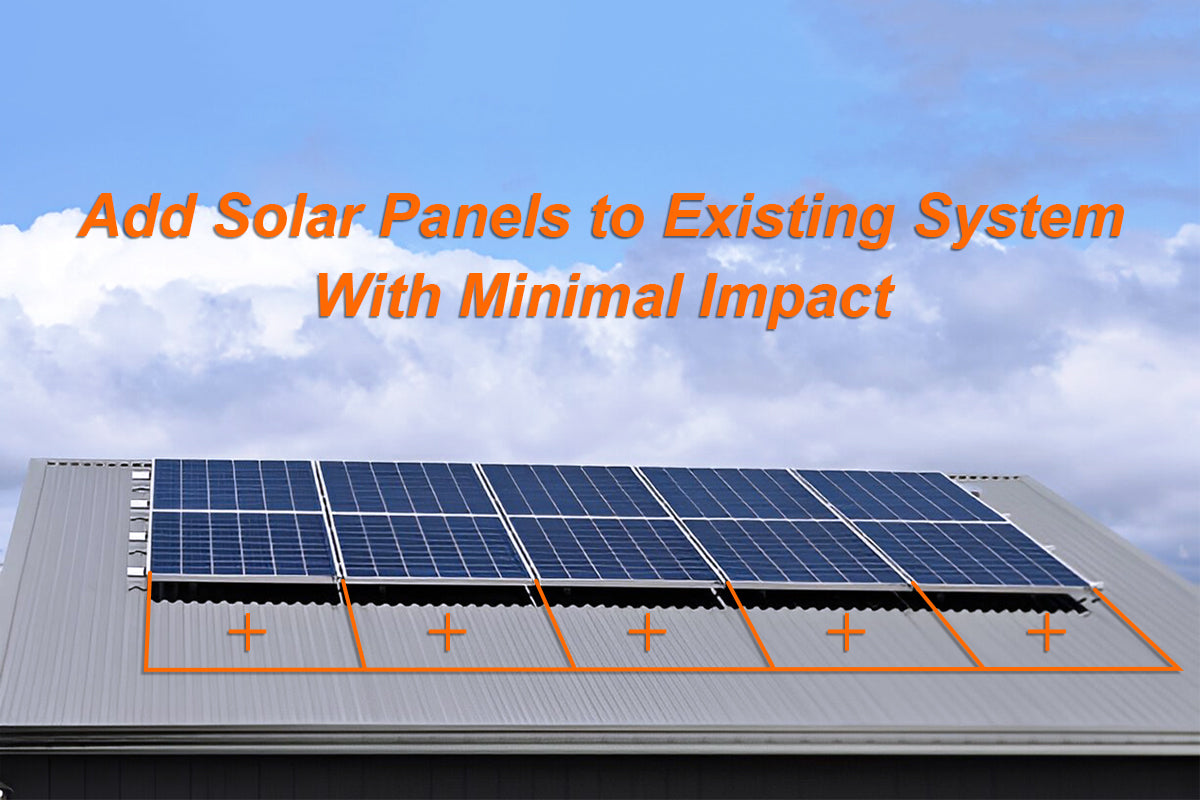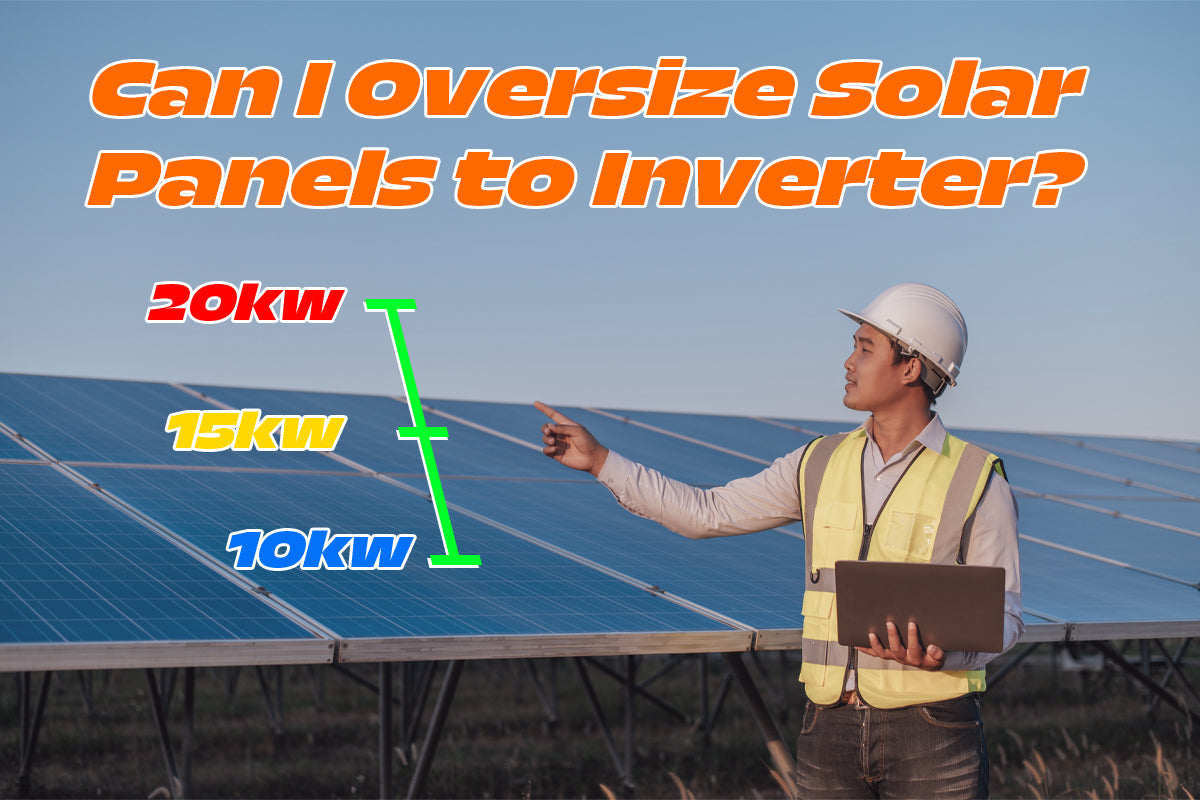แผงโซลาร์เซลล์มักจะเผชิญกับการถูกบดบังจากแหล่งต่างๆ ซึ่งอาจเป็นตามฤดูกาลและเฉพาะเจาะจงต่อแต่ละบ้าน การบดบังมีลักษณะที่แตกต่างกัน ตั้งแต่การบดบังแบบ ไดนามิก เช่น เมฆที่เคลื่อนที่ หิมะ อุจจาระนก หรือฝุ่น ไปจนถึงการบดบังแบบ คงที่ เช่น อาคารหรือไม้ การบดบังเกิดจากอุปสรรคทางสิ่งแวดล้อม โดยแหล่งที่มาของการบดบังแบบไดนามิกจะเป็นชั่วคราวและแหล่งที่มาของการบดบังแบบคงที่จะมีความยาวนานกว่า.
แม้จะเป็นเช่นนั้น แผงโซลาร์เซลล์ยังทำงานได้ภายใต้เงา แผงโซลาร์เซลล์บนหลังคาส่วนใหญ่เริ่มผลิตไฟฟ้าหลังจากพระอาทิตย์ขึ้นในวันที่อากาศแจ่มใส แต่การมีเงามีผลต่อประสิทธิภาพการผลิตไฟฟ้าของแผงโซลาร์เซลล์หรือไม่?
ในบทความนี้ เราจะอธิบายถึง ผลกระทบของการให้ร่มเงา ต่อประสิทธิภาพและประสิทธิผลของพวกเขา และนำเสนอ 3 โซลูชันที่ยืดหยุ่น สำหรับการให้ร่มเงาแก่แผงโซลาร์เซลล์.
- เกิดอะไรขึ้นถ้าพาเนลโซลาร์เซลล์หนึ่งแผ่นถูกบดบังในแถวโซลาร์เซลล์
- แผงโซลาร์เซลล์มีประสิทธิภาพแค่ไหนในที่ร่ม?
- โซลูชันการลดเงาของแผงโซลาร์เซลล์
- Solution1 - ไมโครอินเวอร์เตอร์
- Solution2 - Inverter ที่รับรู้เงา
- Solution3 - อินเวอร์เตอร์โซลาร์เซลล์ MPPT หลายตัว
- Solution4 - ตัวควบคุมการชาร์จ / อินเวอร์เตอร์สำหรับการทำงานขนาน
- ข้อกังวลทั่วไปเกี่ยวกับการใช้แสงสว่างจากพลังงานแสงอาทิตย์
เกิดอะไรขึ้นถ้าพาเนลโซลาร์เซลล์หนึ่งแผ่นถูกบดบังในแถวโซลาร์เซลล์
แผงโซลาร์เซลล์ผลิตกระแสไฟฟ้าผ่านผลกระทบโฟโตโวลตาอิก ซึ่งเกิดขึ้นเมื่อแสงอาทิตย์กระทบพื้นผิวของเซลล์แสงอาทิตย์ภายในแผง เซลล์แสงอาทิตย์เหล่านี้มักทำจากวัสดุเซมิคอนดักเตอร์ เช่น ซิลิคอน ที่ ดูดซับโฟตอนจากแสงอาทิตย์ และปล่อยอิเล็กตรอน การไหลของอิเล็กตรอนนี้สร้างกระแสไฟฟ้า ซึ่งสามารถนำมาใช้เป็นไฟฟ้าได้.
หลักการของแผงโซลาร์เซลล์ระบุว่าพวกมันผลิตไฟฟ้า โดยมีความสัมพันธ์โดยตรง กับการสัมผัสกับแสงแดด การมีเงาบนแผงโซลาร์เซลล์จะลดแสงแดดที่ถึงเซลล์ ทำให้ผลผลิตไฟฟ้าลดลง.
แผงโซลาร์เซลล์สามารถเชื่อมต่อแบบอนุกรมหรือขนาน อย่างไรก็ตาม แม้ในสภาพแสงที่เหมือนกันและสเปคของระบบแผงโซลาร์เซลล์ที่เหมือนกัน การมีเงาจะมีผลต่อแผงแตกต่างกัน ขึ้นอยู่กับวิธีการเชื่อมต่อของพวกเขา.
เงามีผลต่อแผงโซลาร์เซลล์ที่ต่อเป็นอนุกรมอย่างไร?
ในกรณีส่วนใหญ่ แผงโซลาร์เซลล์จะถูกเชื่อมต่อแบบอนุกรม แผงโซลาร์เซลล์มักจะเชื่อมต่อแบบอนุกรมเพื่อเพิ่มแรงดัน ลดการสูญเสียกระแส และทำให้การออกแบบและติดตั้งอินเวอร์เตอร์ง่ายขึ้น.
อย่างไรก็ตาม หากสถานที่ติดตั้งมีเงา การติดตั้งแผงโซลาร์เซลล์แบบอนุกรมไม่ใช่การกำหนดค่าที่ดีที่สุด หากแผงใดแผงหนึ่งมีเงา กระแสไฟจะลดลง ในการ เชื่อมต่อแบบอนุกรม กระแสไฟจะถูกกำหนดโดย ค่าต่ำสุด ในสาย.
สมมติว่า แผงโซลาร์เซลล์โมโนคริสตัลไลน์ขนาด 200w จำนวนสามแผง ที่มีแรงดันไฟฟ้าสูงสุด 21V และกระแสไฟฟ้าสูงสุด 9.52A เชื่อมต่อกันแบบอนุกรม ในสภาวะที่เหมาะสม สายไฟนี้จะผลิตพลังงานได้ 600W.
ถ้าหากแผงโซลาร์เซลล์หนึ่งแผงถูกบัง แรงดันไฟฟ้า อาจลดลงเหลือ 5A ขณะที่แรงดันไฟฟ้ายังคงไม่เปลี่ยนแปลง ผลลัพธ์สุดท้ายจะเป็น 315W (5A x 21V x 3) และ ประสิทธิภาพรวมของสายจะลดลง 48.5%.
ในกรณีนี้ การติดตั้ง bypass diodes สามารถแยกแผงโซลาร์เซลล์ที่ถูกบดบัง โดยการเปลี่ยนเส้นทางกระแสและ "ข้าม" แผงที่ทำงานไม่เต็มที่เพื่อไม่ให้มีผลกระทบต่อทั้งระบบ อย่างไรก็ตาม นี่ยังคงส่งผลให้สูญเสียการผลิตจากแผงที่ถูกข้าม ในสถานการณ์ที่อธิบายไว้ กำลังไฟฟ้ารวมของสายจะอยู่ที่ 400W.

เงามีผลต่อแผงโซลาร์เซลล์ที่ต่อขนานกันอย่างไร?
ในระบบแผงโซลาร์เซลล์ที่เชื่อมต่อแบบขนาน ผลกระทบจากการถูกบังแสงจะน้อยมาก เพราะในวงจรขนาน แรงดันไฟฟ้ายังคงคงที่ในขณะที่ กระแสไฟฟ้าจะรวมกัน โดยใช้แผงสามแผงที่มีแรงดันไฟฟ้าสูงสุด 21V และกระแสไฟฟ้าสูงสุด 9.52A เป็นตัวอย่าง เมื่อเชื่อมต่อในแบบขนาน ระบบจะผลิตพลังงานได้ 600W อย่างสมบูรณ์แบบ
ถ้าหากแผงโซลาร์เซลล์หนึ่งแผงถูกบัง ทำให้กระแสลดลงเหลือ 5 แอมป์ กำลังไฟฟ้ารวมของระบบแผงโซลาร์เซลล์จะอยู่ที่ประมาณ 505W ((9.52 + 9.52 + 5)A x 21V) ซึ่งแสดงถึง การลดลง 16% ในประสิทธิภาพการผลิตพลังงาน.
แผงโซลาร์เซลล์มีประสิทธิภาพแค่ไหนในที่ร่ม?
โดยทั่วไปแล้ว พลังงานที่ผลิตโดยแผงโซลาร์เซลล์จะประมาณครึ่งหนึ่งเมื่อถูกบดบังจากแสงแดดโดยตรง.
อย่างไรก็ตาม ประสิทธิภาพของแผงโซลาร์เซลล์ในที่ร่มไม่มีค่าที่แน่นอน เนื่องจากได้รับอิทธิพลจากหลายปัจจัย แม้จะมีสเปคของแผงโซลาร์เซลล์ที่เหมือนกันและพื้นที่ที่ถูกบังแสงเท่ากัน แต่ผลกระทบจะแตกต่างกันไปตามสภาพที่แตกต่างกัน ปัจจัยต่างๆ เช่น ความเข้มของแสง ตำแหน่งทางภูมิศาสตร์ มุมเอียงของหลังคา และทิศทางล้วนมีบทบาท
แม้จะเป็นเช่นนั้น การมีเงา ไม่ได้หมายความว่า คุณจะไม่สามารถได้รับประโยชน์จากแผงโซลาร์เซลล์ในบ้านได้ หากหลังคาของคุณมีเงาตลอดทั้งวัน โดยการ ออกแบบเลย์เอาต์อย่างรอบคอบ หรือการใช้ เทคโนโลยีบางอย่าง ก็สามารถเอาชนะปัญหาเงาได้.
โซลูชันการลดเงาของแผงโซลาร์เซลล์
ไดโอดบายพาสที่กล่าวถึงก่อนหน้านี้และแผงโซลาร์เซลล์แบบขนานสามารถช่วยบรรเทาการลดลงของประสิทธิภาพการผลิตพลังงานที่เกิดจากการถูกบดบังได้ในระดับหนึ่ง แต่พวกมันไม่ใช่ทางออกที่ดีที่สุดเสมอไป.
ตัวอย่างเช่น สายขนานอาจไม่ตรงตาม ข้อกำหนดแรงดันไฟฟ้า และไดโอดบายพาสสามารถ ลด การมีส่วนร่วมของพลังงานจากแผงโซลาร์เซลล์ที่ถูกบดบังให้เป็นศูนย์ได้เท่านั้น.
พวกเขาไม่สามารถเพิ่มพลังงานที่เก็บได้จากแผงที่มีเงาเพื่อลดการสูญเสียได้นอกเหนือจากสองวิธีนี้ เราจะนำเสนอ 4 ประเภทของอุปกรณ์เพื่อเพิ่มประสิทธิภาพการผลิตพลังงานจากระบบแผงโซลาร์เซลล์อย่างยืดหยุ่นมากขึ้น โดยมั่นใจว่า แผงที่มีเงาจะไม่ส่งผลกระทบ ต่อประสิทธิภาพของแผงอื่นในระบบ.
Solution1 - ไมโครอินเวอร์เตอร์
ไมโครอินเวอร์เตอร์ เหมาะสำหรับการจัดการกับปัญหาการถูกบังแสง เพราะมันแปลงกระแสตรง (DC) เป็นกระแสสลับ (AC) ที่ระดับแผง ทำให้แผงโซลาร์เซลล์แต่ละแผงทำงานได้อย่างอิสระจากแผงอื่นในชุด นั่นหมายความว่าแม้ว่าแผงโซลาร์เซลล์แผงหนึ่งจะถูกบังแสง มันก็ ยังสามารถผลิต ไฟฟ้าจากแสงแดดที่มีอยู่ ในขณะที่ แผงอื่นๆ ยังคง ผลิตพลังงานที่ ความจุสูงสุด ของพวกเขา.
บันทึก:
หากคุณต้องการใช้ อินเวอร์เตอร์แบบสาย คุณสามารถติดตั้ง พลังงานออปติมิซเซอร์ บนแผงโซลาร์เซลล์แต่ละแผง อย่างไรก็ตาม พลังงานออปติมิซเซอร์จะไม่แปลง DC เป็น AC โดยตรง.
แทนที่จะทำเช่นนั้น พวกเขาปรับและ เพิ่มประสิทธิภาพการส่งออก DC จากแต่ละแผงก่อนที่จะส่งไปยังอินเวอร์เตอร์กลางเพื่อแปลงเป็น AC การตั้งค่านี้อาจทำให้เกิดการสูญเสียพลังงานบางส่วนและอาจเพิ่มค่าใช้จ่ายในการบำรุงรักษาระบบและทำให้การขยายระบบในอนาคตซับซ้อนขึ้น.
Solution2 - Inverter ที่รับรู้เงา
ผู้ผลิตบางรายรวมไดโอดบายพาสเข้าไปในแผงโซลาร์เซลล์ของตน เนื่องจากไดโอดบายพาสช่วยให้ตัวแปลงสัญญาณ "ข้าม" แผงที่มีเงาแทนที่จะทำงานที่กระแสที่ต่ำกว่า เส้นโค้งพลังงานของแผงที่มีเงาบางส่วนจึงดูแตกต่างจากแผงที่ไม่มีเงา ดังที่แสดงในรูปด้านล่าง แผงที่มีเงาบางส่วนจะมี ยอดหลายจุด.

อย่างไรก็ตาม อัลกอริธึมการติดตามจุดพลังงานสูงสุดแบบดั้งเดิม (MPPT) ไม่สามารถติดตามจุดพลังงานสูงสุดทั่วโลก (GMPP) ได้ภายใต้เงื่อนไขที่มีเงาเป็นบางส่วน ทำให้ตัวแปลงสัญญาณเลือกจุดพลังงานสูงสุดที่ไม่เหมาะสม (จุดพลังงานสูงสุดท้องถิ่น)
เพื่อแก้ไขปัญหานี้ คุณสามารถเลือกใช้ อินเวอร์เตอร์ที่รู้จักเงา เช่น PowMr อินเวอร์เตอร์เก็บพลังงานชุด SOLXPOW ซึ่งมี อัลกอริธึมติดตามจุดพลังงาน MPP แบบสแกนเงา ที่ทันสมัย ซึ่งจะสแกนจุดพลังงานที่ ระดับสายที่ช่วงเวลาปกติ เพื่อกำหนดจุดพลังงานสูงสุดที่แน่นอน (GMPP) จากนั้นจะปรับจุดการทำงานตาม GMPP นี้เพื่อเพิ่มผลผลิตของโรงไฟฟ้าพลังงานแสงอาทิตย์ของคุณในกรณีที่มีเงา.
Solution3 - อินเวอร์เตอร์โซลาร์เซลล์ MPPT หลายตัว
อินเวอร์เตอร์ Multi-MPPT มักถูกใช้บนหลังคาที่มีการหันไปในทิศทางที่แตกต่างกันและเสนอวิธีแก้ปัญหาที่แข็งแกร่งสำหรับการมีเงา โดยการวางแผนปริมาณและการจัดเรียงของแผงโซลาร์เซลล์บนหลังคาอย่างรอบคอบตามโครงสร้างหลังคาและสภาพแสง แต่ละแถวสามารถเชื่อมต่อกับอินเวอร์เตอร์ที่ติดตั้ง Maximum Power Point Trackers (MPPT) สองตัวหรือมากกว่า ตัวติดตามเหล่านี้ปรับแรงดันไฟฟ้าเพื่อให้ตรงกับช่วงการป้อนเข้าที่ต้องการของอินเวอร์เตอร์อย่างสม่ำเสมอ เพิ่มประสิทธิภาพ การดึงพลังงาน จากทุกสายแผงโซลาร์เซลล์ แม้ในขณะที่มีเงาบางส่วน.
โดยพื้นฐานแล้ว อินเวอร์เตอร์แบบหลาย MPPT ช่วยให้การทำงานของแต่ละสายสามารถทำได้อย่างอิสระ ซึ่งช่วยเพิ่มประสิทธิภาพการผลิตไฟฟ้าในสภาวะที่มีการบดบังแสงที่แตกต่างกัน ความยืดหยุ่นนี้ทำให้การบดบังแสงมีผลกระทบต่อประสิทธิภาพของระบบน้อยที่สุด ลดการสูญเสียพลังงานและเพิ่มประสิทธิภาพโดยรวมให้สูงขึ้น.
Solution4 - ตัวควบคุมการชาร์จ / อินเวอร์เตอร์สำหรับการทำงานขนาน
ตัวควบคุมการชาร์จพลังงานแสงอาทิตย์สำหรับการทำงานขนาน
คล้ายกับอินเวอร์เตอร์ MPPT หลายตัว คุณสามารถออกแบบแต่ละสายได้อย่างยืดหยุ่นตามสภาพจริงและเชื่อมต่อกับ ตัวควบคุมการชาร์จพลังงานแสงอาทิตย์ในรูปแบบการเชื่อมต่อขนาน.
เมื่อระบบพลังงานแสงอาทิตย์ทั้งหมดถูกประกอบเสร็จแล้ว ตัวควบคุมการชาร์จแต่ละตัวจะติดตามจุดการทำงานของระบบแผงโซลาร์เซลล์ที่แตกต่างกันได้อย่างเหมาะสม จากนั้น การสื่อสารแบบ ขนาน ที่เชี่ยวชาญจะทำให้การแลกเปลี่ยนข้อมูลเกิดขึ้นเพื่อเพิ่มการผลิตพลังงานให้สูงสุดและชาร์จแบตเตอรี่ได้อย่างปลอดภัย.
อินเวอร์เตอร์โซลาร์สำหรับการทำงานขนาน
อินเวอร์เตอร์สำหรับการทำงานแบบขนาน ภายในระบบจะจัดการสายไฟแยกกัน ทำให้แผงโซลาร์เซลล์ที่มีเงาและที่มีแสงแดดทำงานได้อย่างอิสระและมีประสิทธิภาพ การตั้งค่านี้ไม่เพียงแต่ เพิ่มประสิทธิภาพการผลิตไฟฟ้า แต่ยัง ช่วยให้สามารถ ขยายระบบ ของระบบแผงโซลาร์เซลล์ที่มีอยู่ในอนาคตได้อีกด้วย.
อินเวอร์เตอร์เหล่านี้สามารถรองรับโหลด AC ขนาดใหญ่และการขยายตัว ทำให้มีความหลากหลายและคุ้มค่ากว่าไมโครอินเวอร์เตอร์ การออกแบบนี้ทำให้แน่ใจว่าทุกแถวทำงานที่ประสิทธิภาพสูงสุด โดยไม่ถูกกระทบจากสภาพของแถวข้างเคียง.โดยรวมแล้ว อินเวอร์เตอร์ขนานมีความแข็งแกร่งในด้านการออกแบบระบบ รองรับการดำเนินงานในปัจจุบันและการเติบโตในอนาคตของความสามารถในการผลิตพลังงานแสงอาทิตย์ ทั้งยังอาจช่วยลดต้นทุนการติดตั้งโดยรวมได้อีกด้วย.
ข้อกังวลทั่วไปเกี่ยวกับการใช้แสงสว่างจากพลังงานแสงอาทิตย์
แผงโซลาร์เซลล์สามารถทำงานได้โดยไม่ต้องมีแสงตรงหรือไม่
แผงโซลาร์เซลล์สามารถผลิตไฟฟ้า แม้จะไม่มี แสงแดดโดยตรง พวกเขายังสามารถผลิตพลังงานในวันที่มีเมฆมากหรือเมื่อท้องฟ้ามีเมฆปกคลุมบางส่วน นี่เป็นเพราะพวกเขาสามารถใช้ประโยชน์จากแสงแดดที่กระจายและยังแปลงมันเป็นไฟฟ้าผ่านเซลล์โฟโตโวลตาอิกของพวกเขา แม้ว่าพวกเขาจะมีประสิทธิภาพสูงสุดภายใต้แสงแดดโดยตรง แต่พวกเขาสามารถทำงานได้ที่ระดับประสิทธิภาพที่ลดลงภายใต้สภาพแสงที่ไม่ตรง
แผงโซลาร์เซลล์ทำงานได้ในวันที่มีเมฆหรือฝนไหม?
ใช่ แผงโซลาร์เซลล์สามารถทำงานได้ในวันที่มีเมฆและฝน แม้ว่าประสิทธิภาพของพวกมันอาจต่ำกว่าวันที่มีแดด แต่พวกมันยังสามารถผลิตไฟฟ้าได้ สภาพอากาศที่มีเมฆจะลดความเข้มของแสงแดดที่ถึงแผง แต่พวกมันยังสามารถเปลี่ยนแสงที่มีอยู่ให้เป็นไฟฟ้าได้ ฝนมักจะไม่ส่งผลกระทบต่อการทำงานของพวกมัน แม้ว่าฝนที่ตกหนักมากหรือเศษซากอาจทำให้การผลิตไฟฟ้าชั่วคราวลดลงจนกว่าจะมีการทำความสะอาด



